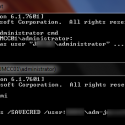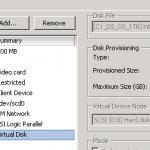I had been using Ubuntu/Kubuntu for some time with Wanadoo/Orange in the UK connecting to the Livebox by Ethernet, but I recently had to move my computer to a different room which necessitated wireless access from Ubuntu to my Wanadoo/Orange Livebox Access Point.
There appears to be a variety of methods to get wireless working but this is the method I used. I have written this so that it will appeal to beginners. It includes a few easy (and reversible if necessary) steps to get Livebox wireless working in Ubuntu.
Ubuntu
I installed Ubuntu 6.10 in a dual-boot configuration and connected the machine to the access point with an Ethernet cable to get any software I needed before getting the wireless card working.
Using Synaptic I checked that the following packages were installed:
- network-manager-gnome
- network-manager
- wpasupplicant
Wireless Card
I had purchased a Linksys WMP55AG wireless PCI card from a local shop for £15 (Euro 21) and installed it into a spare PCI slot. Unfortunately the Inventel (Cohiba) USB Wireless Card supplied with the Livebox did not work for me under Ubuntu.
Note: Although I use Ubuntu 99% of the time I have a dual-boot configuration
as I sometimes need Windows-only software. I found the Linksys WMP55AG harder to
get working on Windows than it was on Ubuntu. One of my problems was that my
scanner somehow conflicted with the Linksys card resulting in Windows freezing
and becoming completely unresponsive. Unplugging the scanner rectified this
problem.
Configure Livebox
The Livebox comes pre-configured but I had to make a small change to allow Ubuntu to access it.
I logged on to the web-based configuration of the Livebox at address: http://192.168.1.1 logging in with username:admin and password:admin
Under the Advanced Configuration menu I changed the security method from “WPA and WEP” to “WPA only”. For security I believe this is the better option anyway.
I pressed the button marked “1” on the Livebox to allow it to ‘pair’ with wireless cards (I presume this is an extra and worthwhile security feature).
Configure Ubuntu for WPA
I first checked that Ubuntu could see the Linksys wireless card and my Access Point by issuing the following commands at the terminal (Applications->Accessories->Terminal)
iwconfig
iwlist scan
For the next step I needed to remove references to network interfaces. At the terminal I typed the following (typing my password when requested):
sudo gedit /etc/network/interfaces
I commented out all entries in this file other than the “lo” entry. To comment out a line type the hash/pound symbol (#) at the beginning of each line. I saved the file and closed it.
I next needed to create a file for wpasupplicant, so at the terminal I typed:
sudo gedit /etc/default/wpasupplicant
Gedit creates the file but there is nothing in it yet. I typed ENABLED=0 , saved the file and then closed it.
Most of the configuration is ready so I restarted networking by entering the following command at the terminal:
sudo /etc/init.d/dbus restart
A few seconds later Networking was up and running again with the Networking applet in the System Tray.
Note: If the icon for network manager is not beside your clock you can add it by
right clicking on the Task Bar and choosing “Add to Panel”. A dialog opens
showing applets which can be added. Choose the Network Monitor one which looks like one computer superimposed on another.
Finally, I clicked the Network Manager icon on the System Tray/Task Bar and choose my wireless network (i.e. WANADOO-xxxx). I was asked to enter the WEP/WPA key. I typed the WEP key which is found on a sticker underneath the Livebox. The WEP key should be entered without spaces or hyphens.
It may take a few seconds to connect but after this you should be connected wirelessly to your Livebox and you can remove the Ethernet cable if necessary.
Time to Get Automatix!
Drawbacks
The only drawback of this method is that the WEP/WPA key is stored in the Ubuntu keyring and as such you have to type the keyring password each time you start Ubuntu, but I suppose that is better than re-typing the key each time.
Advantages
The advantages of using this method are that it is easy to revert back if it doesn’t work out. You can remove the /etc/default/wpasupplicant file and remove the comments from /etc/network/interfaces and then restart networking to get back to where you started.
I also think that it is useful being able to use the Network Manager applet to switch between Wired Networking and Wireless Networking. Although I have only one Access Point available, I look forward to trying this method on a laptop when moving between different wireless networks.

